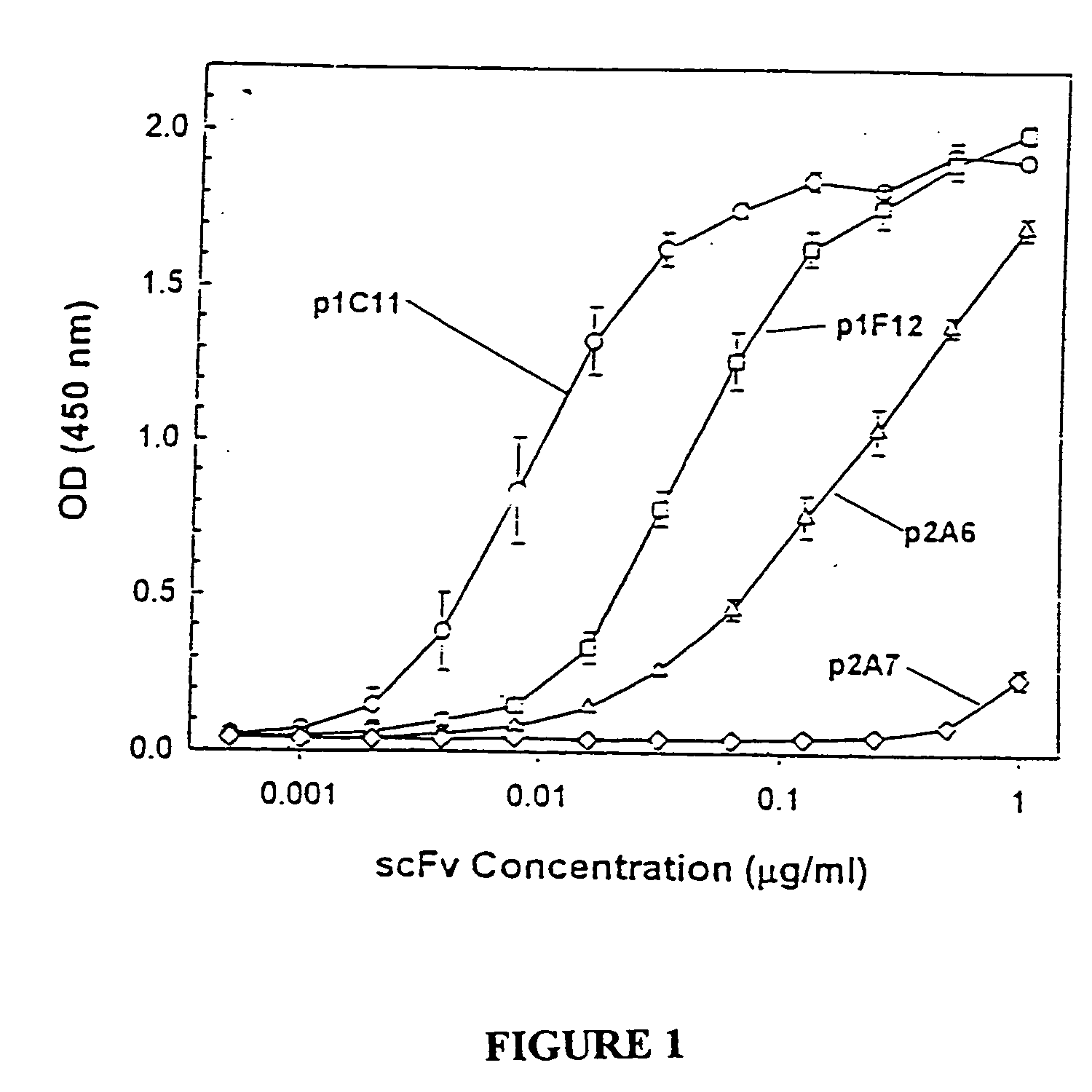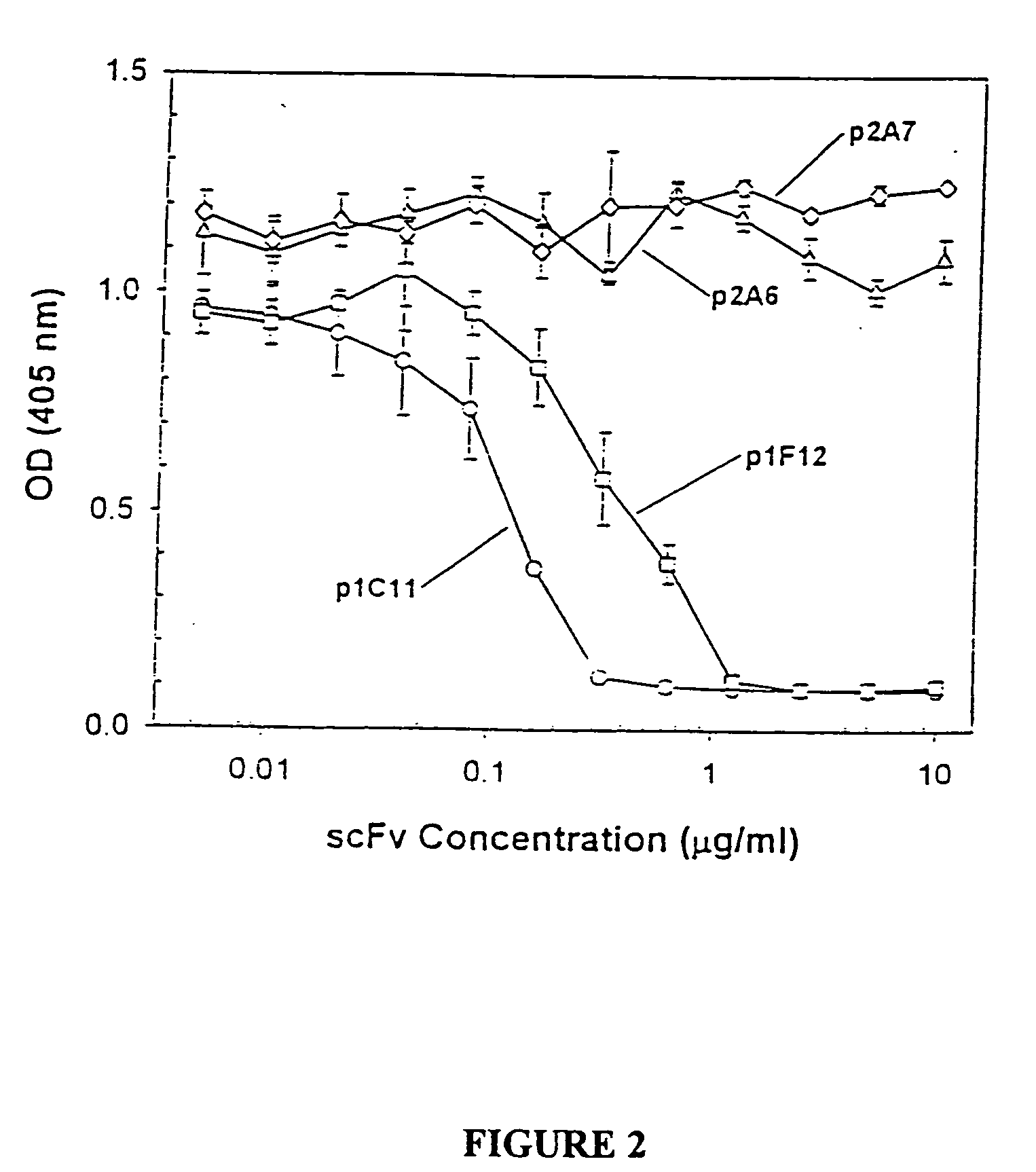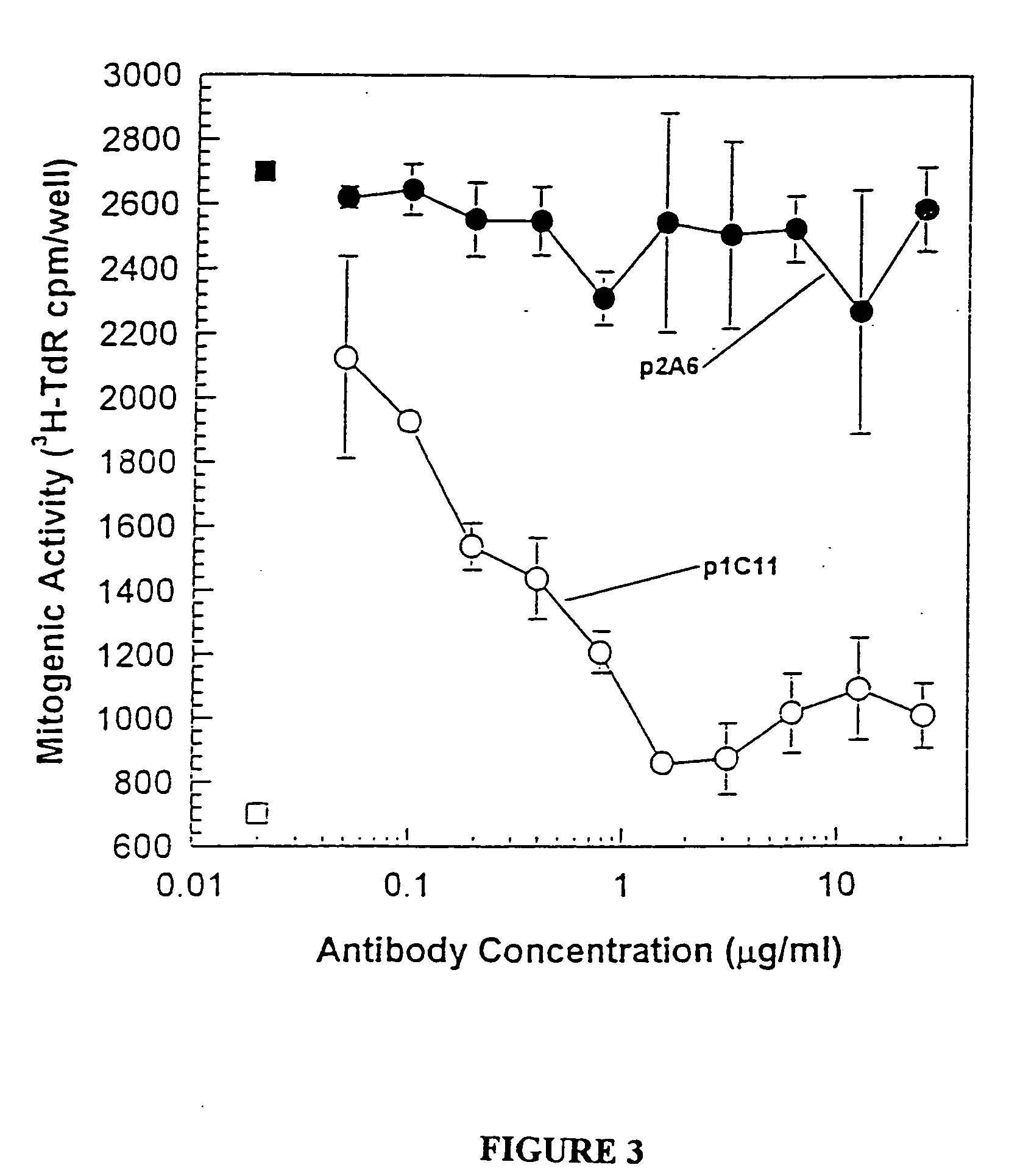Antibodies specific to KDR and uses thereof
a technology of antibodies and kdr, applied in the field of antibodies specific to kdr, can solve the problem that tumors are incapable of growing beyond a certain siz
- Summary
- Abstract
- Description
- Claims
- Application Information
AI Technical Summary
Benefits of technology
Problems solved by technology
Method used
Image
Examples
examples
[0064] The Examples which follow are set forth to aid in understanding the invention but are not intended to, and should not be construed to, limit its scope in any way. The Examples do not include detailed descriptions of conventional methods, such as those employed in the construction of vectors and plasmids, the insertion of genes encoding polypeptides into such vectors and plasmids, or the introduction of plasmids into host cells. Such methods are well known to those of ordinary skill in the art and are described in numerous publications including Sambrook, J., Fritsch, E. F. and Maniatis, T. (1989) Molecular Cloning: A Laboratory Manual, 2nd edition, Cold Spring Harbor Laboratory Press.
example i
Producing Single Chain Antibodies
Example I(a)
Cell Lines and Proteins
[0065] Primary-cultured HUVEC was maintained in EBM-2 medium at 37° C., 5% CO2. Cells were used between passage 2-5 for all assays. VEGF165 protein was expressed in baculovirus and purified. cDNA encoding the extracellular domain of KDR was isolated by RT-PCR from human fetal kidney mRNA and subcloned into the Bgl II and BspE I sites of the vector AP-Tag. In this plasmid the cDNA for KDR extracellular domain is fused in-frame with the cDNA for human placental AP. The plasmid was electroporated into NIH 3T3 cells together with the neomycin expression vector pSV-Neo and stable cell clones were selected with G418. The soluble fusion protein KDR-AP was purified from cell culture supernatant by affinity chromatography using immobilized monoclonal antibodies to AP.
Example I(b)
Mice Immunization and Construction of Single Chain Antibody Phage Display Library
[0066] Female BALB / C mice were given two intraperitoneal (i.p...
example i (
Example I(e)
Preparation of Soluble scFv
[0073] Phage of individual clones were used to infect a nonsuppressor E. coli host HB2151 and the infectant selected on 2YTAG-N plates. Expression of scFv in HB2 151 cells was induced by culturing the cells in 2YTA medium containing 1 mM isopropyl-1-thio-B-D-galactopyranoside at 30 C. A periplasmic extract of the cells was prepared by resuspending the cell pellet in 25 mM Tris (pH 7.5) containing 20% (w / v) sucrose, 200 mM NaCl, 1 mM EDTA and 0.1 mM PMSF, followed by incubation at 4 C with gentle shaking for 1 h. After centrifugation at 15,000 rpm for 15 min., the soluble scFv was purified from the supernatant by affinity chromatography using the RPAS Purification Module (Pharmacia Biotech).
PUM
| Property | Measurement | Unit |
|---|---|---|
| Affinity | aaaaa | aaaaa |
Abstract
Description
Claims
Application Information
 Login to View More
Login to View More - R&D
- Intellectual Property
- Life Sciences
- Materials
- Tech Scout
- Unparalleled Data Quality
- Higher Quality Content
- 60% Fewer Hallucinations
Browse by: Latest US Patents, China's latest patents, Technical Efficacy Thesaurus, Application Domain, Technology Topic, Popular Technical Reports.
© 2025 PatSnap. All rights reserved.Legal|Privacy policy|Modern Slavery Act Transparency Statement|Sitemap|About US| Contact US: help@patsnap.com



